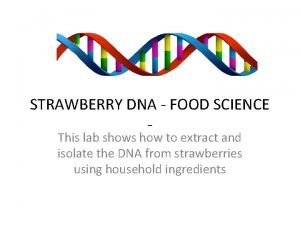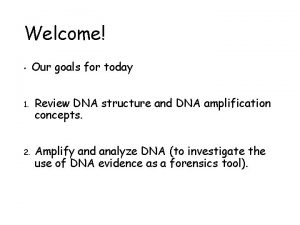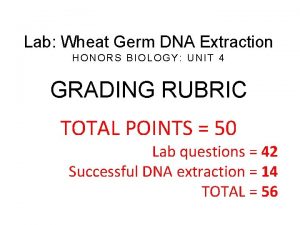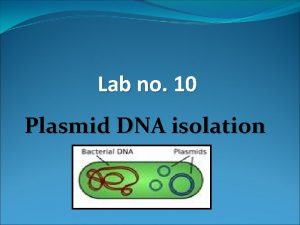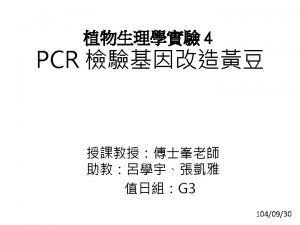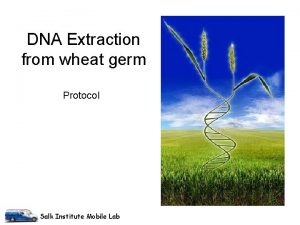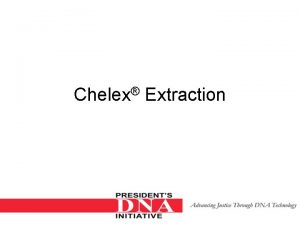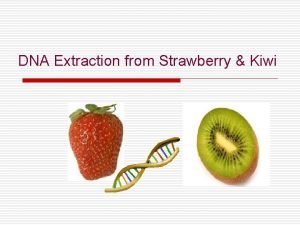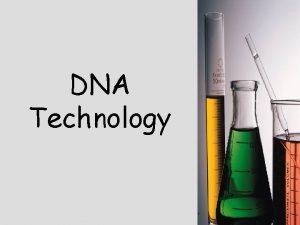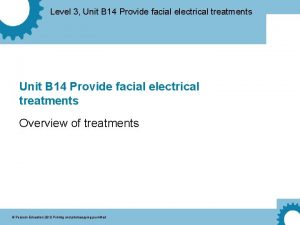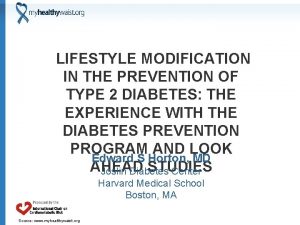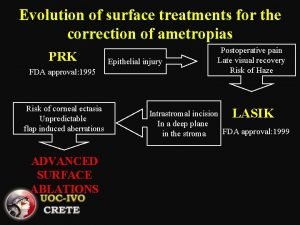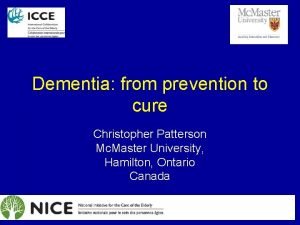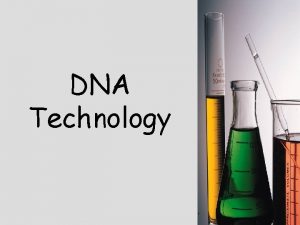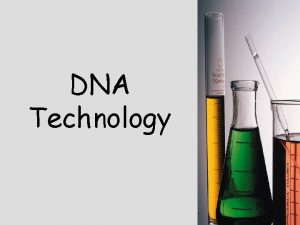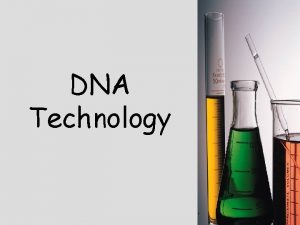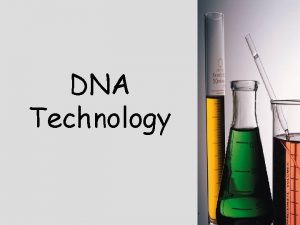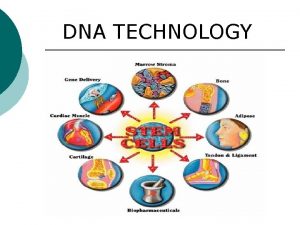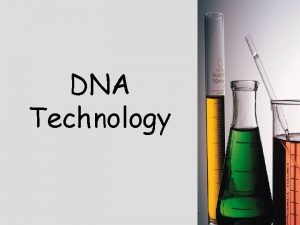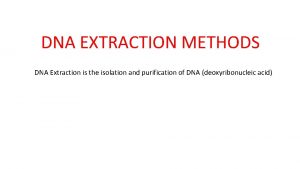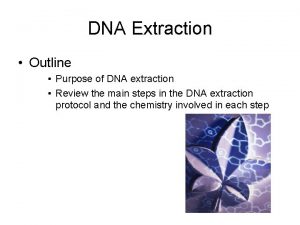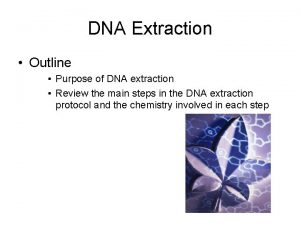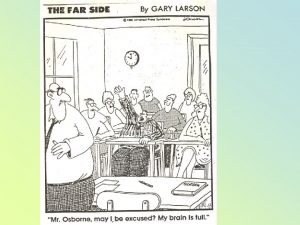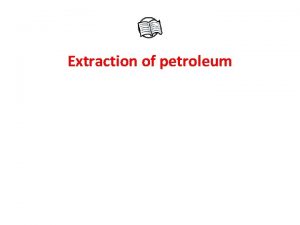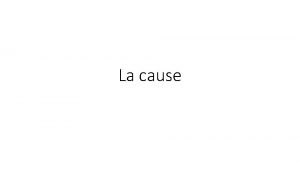DNA Technology 1 DNA Extraction Chemical treatments cause























- Slides: 23

DNA Technology 1

DNA Extraction • Chemical treatments cause cells and nuclei to burst • The DNA is inherently sticky, sticky and can be pulled out of the mixture • This is called “spooling” DNA 2

“Spooled” DNA 3

Cutting DNA • Restriction enzymes cut DNA at specific sequences • Useful to divide DNA into manageable fragments 4

Electrophoresis • DNA can be separated based on size and charge • The phosphate groups are negatively charged • DNA is placed in a gel and electricity is run through 5

Electrophoresis • Negative DNA moves toward the positive end • Smaller fragments move farther and faster 6

Electrophoresis 7

Crime Scene 8

Paternity 9

Paternity 10

Steps in DNA Sequencing • Many copies of a single strand of DNA are placed in a test tube • DNA polymerase is added • A mixture of nucleotides is added some of which have dye molecules attached • Each base (A, T, C, G) has a different color dye 11

Steps in DNA Sequencing • By chance, some dyed nucleotides & some regular ones are added • Dye molecules are large and stop the chain from growing 12

DNA Sequencing • The result is DNA fragments of multiple sizes with colors that can be identified 13

DNA Sequencing • After the gel separates the resulting fragments by size, we 'read' the sequence from bottom to top. 14

Copying DNA • Polymerase Chain Reaction • Also called PCR • A method of making many copies of a piece of DNA 15

Steps in Copying DNA • A DNA molecule is placed in a small test tube • DNA polymerase that can work at high temps is added 16

Steps in Copying DNA • The DNA is heated to separate the two strands • Primers, Primers short pieces of DNA complementary to the ends of the molecule to be copied, are added 17

Copying DNA • The tube is cooled, and DNA polymerase adds new bases to the separated strands 18

PCR Large amounts of DNA can be made from a small starting sample 19

Cloning • Clone a member of a group of genetically identical cells • May be produced by asexual reproduction (mitosis) 20

Cloning organisms • A body cell from one organism and an egg cell from another are fused • The resulting cell divides like a normal embryo 21

Cloning “Dolly” 22

23
 Strawberry dna extraction materials
Strawberry dna extraction materials Dna extraction
Dna extraction Wheat germ dna factory
Wheat germ dna factory Dna extraction
Dna extraction Fraction
Fraction G
G Wheat germ dna factory
Wheat germ dna factory Chelex dna extraction advantages and disadvantages
Chelex dna extraction advantages and disadvantages Purpose of extraction
Purpose of extraction Dna extraction from kiwi fruit
Dna extraction from kiwi fruit Ter thin client
Ter thin client Ultimate cause of behavior
Ultimate cause of behavior Proximate causation vs ultimate causation
Proximate causation vs ultimate causation Learned behavior biology
Learned behavior biology Treatments for acute renal failure
Treatments for acute renal failure Facial electrical treatments level 3
Facial electrical treatments level 3 Alternating treatment design
Alternating treatment design Hiv treatments
Hiv treatments Diabetes treatments
Diabetes treatments Advanced surface treatments
Advanced surface treatments Insomnia treatment
Insomnia treatment Dementia treatments and interventions near patterson
Dementia treatments and interventions near patterson Replication
Replication Bioflix activity dna replication dna replication diagram
Bioflix activity dna replication dna replication diagram
